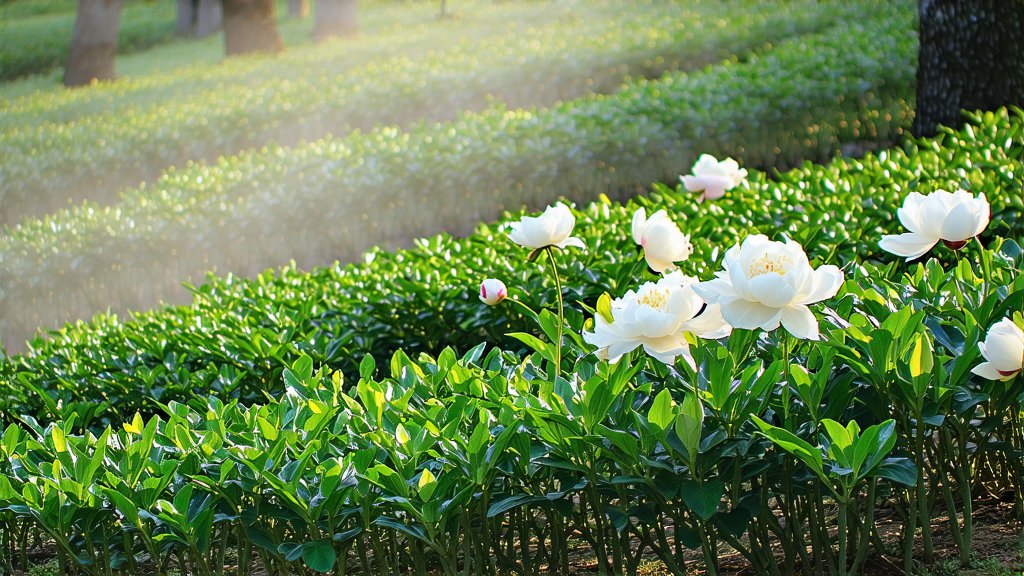
White Peony Tea (Bai Mudan), one of the most revered varieties within China's illustrious white tea category, stands as a testament to the country's profound tea culture. Originating from the lush mountains of Fujian Province, this exquisite tea has captivated connoisseurs and casual drinkers alike for centuries. In this article, we embark on a journey through its rich history, delve into its unique varieties, explore its intricate crafting process, and uncover the art of appreciating its delicate flavors.
Historical Roots
The origins of White Peony Tea trace back to the early Tang Dynasty (618-907 AD), with its prominence solidifying during the Song Dynasty (960-1279 AD). The name "Bai Mudan," which translates to "White Peony," was inspired by the tea's appearance—delicate leaves adorned with silvery downy hairs reminiscent of peony blossoms. This tea was not only cherished for its flavor but also revered for its medicinal properties, often prescribed as a remedy for various ailments.
Throughout history, White Peony Tea has been a symbol of elegance and refinement, frequently presented as a tribute tea to Chinese emperors and used in diplomatic gift exchanges to foster goodwill with neighboring countries. Its reputation transcended borders, making it a sought-after commodity in international trade, particularly along the ancient Tea Horse Road that connected China to Tibet and beyond.
Varietals of White Peony Tea
Within the realm of White Peony Tea, there are several notable varietals, each offering a distinct flavor profile and aromatic experience:
-
Gong Mei (Tribute Eyebrow): The highest grade of Bai Mudan, featuring whole buds without stems or leaves. Its production is meticulous, involving handpicking only the finest buds, ensuring a pure and concentrated flavor.
-
Xiu Mei (Slender Eyebrow): Comprising one bud and one or two young leaves, Xiu Mei strikes a balance between sweetness and complexity, with a more robust body compared to Gong Mei.
-
Gong Mudan (Imperial Peony): A blend of both buds and leaves, this variety offers a harmonious fusion of flavors, showcasing the versatility of Bai Mudan. It is often considered more accessible while still retaining the essence of the tea.
Each of these variations caters to different preferences, allowing enthusiasts to explore the nuances of Bai Mudan and find their personal favorite.
The Art of Crafting Bai Mudan
The crafting of White Peony Tea is an art form that demands precision, patience, and a deep understanding of nature's rhythms. The process begins in late spring when the tea bushes awaken from their winter dormancy, sprouting tender new buds and leaves. These are carefully handpicked, typically between March and April, ensuring only the freshest and most succulent parts are harvested.
After plucking, the tea undergoes a natural withering process where it is spread thinly on bamboo mats or screens, allowing it to dry slowly under the sun or in a well-ventilated room. This step is crucial as it initiates a gentle oxidation, preserving the tea's delicate flavors and aromas while reducing moisture content.
Once withered, the tea is lightly rolled to encourage further drying and to shape the leaves. Some traditional methods involve baking the tea over charcoal fires, imparting a subtle smokiness that complements its inherent sweetness. However, modern techniques often employ electrical ovens to maintain consistency and purity of flavor.
Finally, the dried tea is sorted and graded based on size and quality before being packaged for distribution. Throughout this entire process, skilled artisans exercise great care to preserve the integrity of the tea, resulting in a product that embodies the very soul of Fujian's terroir.
Appreciating White Peony Tea
To truly appreciate White Peony Tea, one must engage in the ritual of tea preparation and tasting, known as "Gongfu Cha" or "Kung Fu Tea." This practice emphasizes mindfulness and attention to detail, transforming the act of drinking tea into a meditative experience.
Begin by selecting a suitable vessel, such as a Gaiwan (a lidded bowl) or a Yixing clay teapot, renowned for enhancing the tea's flavors. Pre-warm the vessel with hot water to prepare it for brewing. Measure approximately 5 grams of Bai Mudan per 150ml of water, adjusting according to personal taste preference.
Use freshly drawn, filtered water heated to around 80-85°C (175-185°F) to avoid scalding the delicate leaves. Steep the tea for about 1-2 minutes for the first infusion, then incrementally increase steeping times for subsequent infusions. Bai Mudan can be enjoyed through multiple infusions, each revealing new layers of flavor and aroma.
As you sip, pay close attention to the tea's color, clarity, and mouthfeel. White Peony Tea typically presents a pale yellow-green liquor with a silky texture. Note the interplay of floral notes—orchid, peony, and honeysuckle—with hints of fruitiness and a lingering sweetness that envelops the palate. The finish should be clean, leaving a refreshing aftertaste that invites contemplation.
In conclusion, Bai Mudan is more than just a beverage; it is a cultural treasure that encapsulates the harmony between man and nature. From its storied past to its meticulous craftsmanship and the artful enjoyment it inspires, Bai Mudan continues to enchant tea lovers worldwide. As you embark on your own exploration of this extraordinary tea, may you discover not only its flavors but also the profound sense of tranquility and connection it brings.